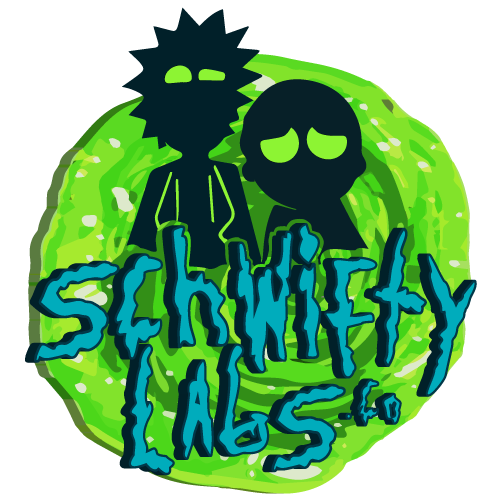Buy Shrooms, CBD, LSD
THC Tolerance and Reset Strategies: Finding Balance in Consumption
Cannabis is widely enjoyed for relaxation, creativity, and therapeutic relief. However, frequent THC use can lead to tolerance, where the body and brain become less sensitive to its effects. This often leaves people consuming larger amounts to achieve the same high, which can disrupt balance and enjoyment.
Interestingly, the concept of tolerance is not unique to cannabis—it also plays a role in how other substances like DMT and LSD interact with the brain. By exploring how THC tolerance develops and learning effective reset strategies, consumers can find balance and continue enjoying cannabis without overuse.
Understanding THC Tolerance
THC works by binding to CB1 receptors in the brain’s endocannabinoid system. Over time, with frequent exposure, these receptors can become desensitized or downregulated, leading to reduced effects.
- Early Stages: Users may notice they need slightly more THC to achieve relaxation.
- Moderate Tolerance: The “high” feels shorter or weaker, even with higher doses.
- High Tolerance: THC feels ineffective, often pushing people toward stronger edibles, concentrates, or more frequent use.
This cycle can strain both mental balance and physical well-being, making tolerance management essential.
Comparing Tolerance in THC, DMT, and LSD
While THC builds tolerance gradually, other substances like DMT (dimethyltryptamine) and LSD (lysergic acid diethylamide) behave differently:
- DMT: Known as the “spirit molecule,” DMT’s tolerance is short-lived. After use, tolerance diminishes rapidly—often within hours—because of how it interacts with serotonin receptors rather than CB1 receptors.
- LSD: LSD produces near-immediate tolerance. After one dose, the same amount will feel dramatically weaker if taken within a couple of days. It often takes a week or more for tolerance to reset fully.
In contrast, THC tolerance develops over days, weeks, or months of steady use. This slower progression means cannabis users often don’t realize how much their tolerance has changed until effects feel flat.
Signs You May Need a THC Reset
If you’re unsure whether tolerance is affecting you, watch for these signs:
- Needing larger doses to feel relaxed or euphoric
- Reduced creativity or motivation after use
- Shorter-lasting effects from your usual dose
- Spending more money on cannabis without increased satisfaction
- Feeling “numb” or detached instead of uplifted
Reset Strategies for THC Tolerance
1. The Tolerance Break (T-Break)
The most effective method is a temporary pause from cannabis. A break of 2–4 weeks allows CB1 receptors to reset, restoring sensitivity to THC. Even a shorter 3–7 day break can noticeably reduce tolerance for many users.
2. Switching Consumption Methods
Changing how you consume cannabis—such as from smoking to tinctures or edibles—can alter how THC interacts with your body. This may help reduce mental dependence while keeping overall intake lower.
3. Microdosing THC
Instead of high doses, try small, controlled amounts throughout the day. Microdosing helps maintain therapeutic benefits without overwhelming the endocannabinoid system.
4. Balancing with CBD
CBD can counteract some of THC’s tolerance-related effects by modulating the endocannabinoid system. Products with a CBD:THC ratio can provide relief while reducing reliance on high THC levels.
5. Lifestyle Support
Exercise, hydration, sleep, and diet rich in omega-3 fatty acids help the endocannabinoid system function optimally. This can support a smoother tolerance reset.
The Psychedelic Perspective: THC vs. DMT and LSD
Unlike cannabis, substances such as DMT and LSD are not typically associated with daily use due to their intensity and duration. However, they offer insights into tolerance and brain plasticity:
- DMT resets quickly, making frequent use less common but possible without significant tolerance buildup.
- LSD tolerance is strong but short-lived, encouraging longer breaks between experiences.
- THC tolerance grows more slowly but becomes a long-term challenge for regular users.
For those exploring plant medicines or psychedelics, these comparisons highlight the importance of moderation, mindful use, and intentional breaks.
Finding Balance in Cannabis Consumption
The goal of tolerance management isn’t to quit cannabis altogether—it’s to restore balance. By practicing resets, experimenting with microdosing, and integrating holistic wellness, users can experience THC’s benefits more fully.
Just as psychonauts approach DMT and LSD with intention and respect, cannabis consumers can apply similar principles: pacing, mindfulness, and integration. When used wisely, THC can remain a powerful tool for relaxation, creativity, and self-discovery without losing its magic.
Conclusion
THC tolerance is a natural outcome of regular cannabis use, but it doesn’t have to mean diminished enjoyment. With strategies like tolerance breaks, microdosing, and lifestyle support, users can reset their system and reconnect with the benefits of cannabis.
By drawing parallels with DMT and LSD, it becomes clear that tolerance management is not just about taking less—it’s about cultivating a balanced, intentional relationship with psychoactive substances. In doing so, cannabis remains a source of inspiration, healing, and balance.

